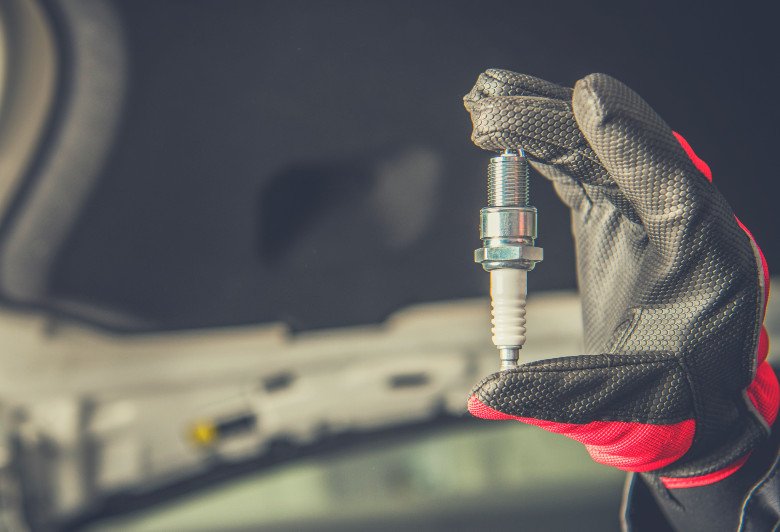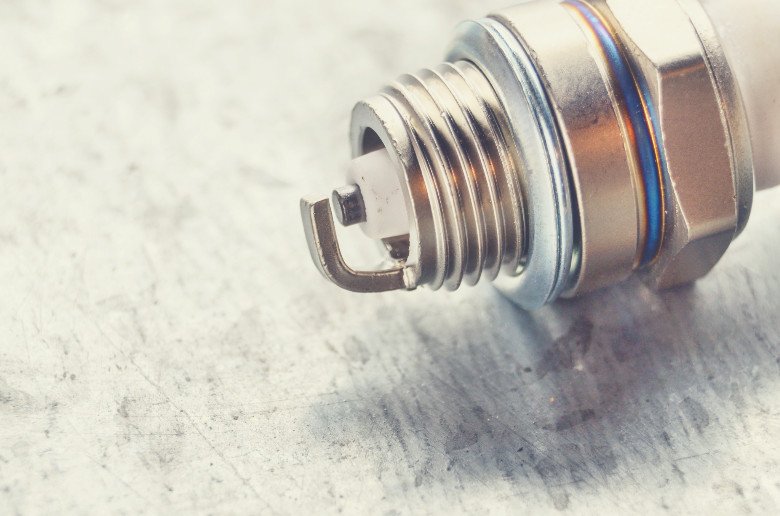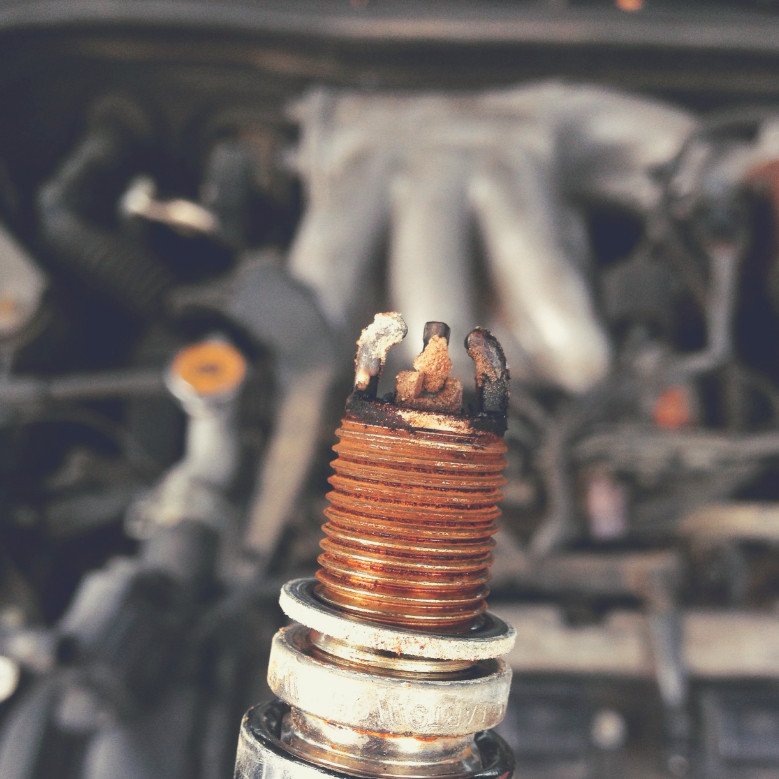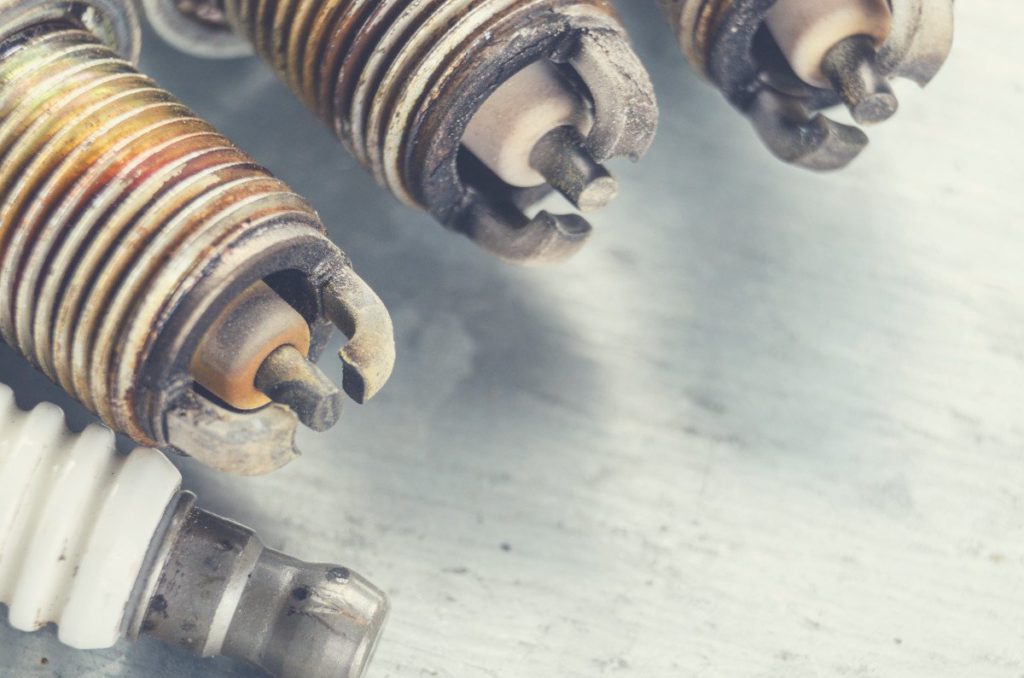Setting the gap on spark plugs was one of the first things my father taught me to do when working on cars. This process was so simple. I was only 8 or 10 years old at the most and I learned to do it in about 5 minutes.
You might think that gapping spark plugs are a thing of the past. When your car, SUV, or truck needs new spark plugs you buy new ones and install them, right? Unlike spark plugs and points in engines of the past, you don’t need to gap spark plugs regularly.
That’s a nice thought, but it isn’t true.
OK, well ignition points are no longer necessary unless you own a classic car, but you will still need to gap those spark plugs, new or not.
Why? Think about it. The truth is that spark plugs are manufactured to fit a wide variety of engines. Not all these engines, by the way, use the same spark plug gap. The manufacturer will most likely gap the plugs to the most common setting.
An incorrect spark plug gap can cause misfiring, poor fuel economy, a loss of power, and it can cause the plug to wear out faster.
Let’s not forget if you have made modifications to your engine. If yo’uve added a turbo or a high powered ignition system, you will need to use a different setting from the manufacturer’s recommendation.
Last, I don’t know about you, but after working for years in the parts department for aftermarket parts and even at dealers, spark plugs can take a beating. We drop them, sometimes drop them and step on them, toss the boxes around, and more. You get the picture.
While you might think that this won’t affect the gap, think again. Even the mechanics at every dealer I have ever worked for check the spark plug gap on new plugs. They know that the plugs gap may have been inadvertently altered in the shipping process.
This is why you should have the perfect spark plug gap tool. While all spark plug gap tools do basically the same thing, they aren’t all the same.
If you are curious about what differences there are between spark plug gap tools and which one is the best for you and your vehicles, keep reading.
I’ve done all the research for you.
OEMTOOLS 26 Blade Master Feeler Gauge
This is an old-style feeler gauge for setting spark plugs (and points, but since those cars are few and far between, I will focus on spark plugs).
This is the type of spark plug gap gauge that I learned on and the type that I used in school.
The great thing about this feeler gauge is that they last forever! And with so many blades (sizes) available, you will never have to “guess” because your tool didn’t have the size you needed.
Pros
- Each blade is laser etched in both SAE and MM, which means the numbers won’t wear off like painted numbers.
- All the blades fold up into a neat little case, so they won’t get damaged.
- Even if you should accidentally damage one or more of the blades, the sweet thing about this spark plug gap tool is that each blade can be replaced!
- This set of feelers works well for other applications as well, something that can’t be said for other spark plug gap tools. These work well for setting valve clearances, working on guitars, small engine work, and more.
Cons
- Some users have complained that the oil on the blades makes them very slippery to work with. But the oil is necessary to protect the blades from rusting. I suppose if this bugs you, you could wipe them off with a clean rag, then reoil them when you are finished working.
Even if you only plan on using this item once a year to gap your plugs, you will be forever grateful that you purchased the OEMTOOLS Master Feeler Gauge.
CTA Tools Ramp-Type Spark Plug Gapper
Everyone has their favorite style when it comes to tools. I clearly remember a classmate who swore that this style of spark plug gap tool was superior to a feeler gauge. To each their own!
If you don’t think that you will ever need something as large as the feeler gauge mentioned above, this inexpensive little tool will do the job.
Just take note if your car has fine wire or filament plugs. I’ve never used this on those types of plugs, it works only on cathodes.
Pros
- It has an easy to read scale that has a die-cast type of construction. It will stand up to being dropped on the ground and stepped on, something you can’t say about feeler gauges.
Cons
- Some users claim that these are not as accurate as a feeler gauge, but I would have to disagree. These are just as accurate. But I do feel that a person must have some experience to use it properly.
- Others felt that this spark plug gap tool was extremely limited since it only works on the wide cathodes of old, not the fine wire or filament spark plugs.
- It won’t have a wide range of uses that a feeler gauge will, but it does the job just fine.
I like this spark plug gap tool because it’s easy to store. I can toss it from across the garage into the toolbox and not worry about it. It also makes a cool bottle opener. Just saying.
K-MOTOR Performance Spark Plug Gap Tool
For those of you who are really into performance, this is the perfect tool for your spark plugs.
Spark plugs that are properly gapped will burn at their best efficiency. The proper gap is not always what the manufacturer recommends.
Many experts say that if you drive normally (obeying speed limits, do a mixture of street and highway driving, etc.) you can actually increase your spark plug gap by about 0.010” for the best possible fuel economy.
For those of you who love to put the pedal to the metal, you should reduce the recommended gap by that same amount, 0.010”.
The residue that forms on the plug will tell you quite a bit about the overall spark plug gap. If you are interested in trying different gaps but don’t want to bang the electrode on the cement to close it, the K-Motor Gap Tool is what you are looking for.
This spark plug gap tool works with 14MM spark plugs. I love this tool. It puts an end to banging it on the ground to close the electrode space, then prying it open, realizing you went too far, tapping it on the concrete again, etc.
The K-Motor spark plug gap tools does away with all that and gives you the perfect gap setting that you want right off the bat. No more banging, no more prying, no more damaged spark plugs because you’ve banged them just a little bit too hard.
This product also gives you a small feeler gauge so that you can double-check the gap. What else do you need?! I love this spark plug gap tool because it makes this job quick and easy! It feels very sturdy in your hand, not cheap like it will break the next time you use it.
This little jewel is so exceptional that it’s difficult to find someone who didn’t like it!
I highly recommend this spark plug gap tool. It’s great for those who are picky about their engines and want more precision.
How to gap spark plugs without a tool?

What would you do if you did not have any tool to set the gap on a set of spark plugs?
If you are a serious old-timer (like me) you might remember a time when the points on your car got so burned that the car wouldn’t start.
If you’re stranded in the middle of nowhere buying a new set wasn’t possible. Did you remove the points, sand down the burned part with whatever you could find (a nail file? a scrap of sandpaper?) and then use a matchbook cover to set them temporarily?
I clearly remember doing this more than once, but gapping spark plugs without any tools? Channel lock pliers may work well.
For the average car, a gap of .025 would work just fine until you could get a true reading from a trusty feeler gauge or other spark plug gap tool.
I’ve also seen my share of people use a flat head screwdriver to pry the electrode open.
This isn’t a good idea, again, because while the electrode looks thick, it isn’t that difficult to chip or to break it off entirely. (Yes, this is experience talking!)
Hopefully, you never find yourself in this situation, but I’ve been around, and I know that it happens.
How do you read a spark plug gap tool?

First, you will need to know what gap your engine uses. If you are new to this, you can start with the gap that the manufacturer recommends.
Older model cars might use SAE readings, which look like this: .025 or .030. Newer models will most likely list their numbers by metric readings, which look like this: 0.6 or 1.8, etc.
Many spark plug gap tools have measuring capabilities for both SAE and metric.
Let’s assume that you need to gap your spark plugs at .025. Find the feeler gauge with that number or find that number on whatever spark plug gap tool that you have.
Place the feeler gauge or other tool between the two electrodes. The tool should have a little bit of resistance when you try to insert it between the electrodes, as well as when you pull it out.
If the feeler gauge slides in with no resistance and you can see that it is not touching the electrodes, the gap is too large. Most feeler gauges and other tools have a small opening on the ends to both close and open the electrodes. It should look something like a miniature bottle opener.
If the feeler gauge won’t go between the two electrodes, the space between them needs to be opened. Use the tool on the spark plug gap tool to open the electrodes, but just a very tiny bit. You can always make the opening wider if it is still too small, right?
Continue until the space between the spark plugs is the perfect fit. A larger feeler gauge should not be able to fit between these two spaces. A smaller feeler gauge will have no resistance. The correct feeler gauge will have a slight amount of resistance when you place it between the two electrodes.
What is the correct spark plug gap?

Every engine has a different setting, much in the same way that every person has a different shoe size.
Not only does the year and engine model matter, but how you drive and how many miles you put on your car also matter.
You can always start with the manufacturer’s setting for the spark plug gap. In general, that will be somewhere between 0.6-1.8M or 0.024 and 0.071 SAE.
Your owner’s manual or repair manual can help you with this information, or you can search for it. You can also speak to a mechanic about what they feel would be the proper gap for the spark plugs on your vehicle. It will depend on its age and your driving habits.
What happens if the spark plug gap is too big?

For those who say that that spark plug gap isn’t really important, they might think otherwise when their car won’t start.
Yep, a spark plug gap that is very big or wide may cause the engine to not start at all! More common though, the engine will develop a misfire problem, where that cylinder doesn’t fire at all.
When the gap is too large, the voltage must travel too far. The farther the voltage must travel, the weaker the charge becomes. This can cause quite a variety of problems. That includes misfiring, fouled plugs, and engine hesitation. It can also cause a no-start or hard start problem.
Can spark plug gap cause rough idle?

Yes. An excessive or wide spark plug gap can cause a rough idle. It also won’t allow the car to start at all or cause it to run very rough because the cylinder doesn’t fire.
A gap that is too small can cause similar problems, including missing, hard starting, and a rough idle.
Do spark plug gaps increase over time?

Yes, the gap will increase over time.
The gap can increase due to the continual heating and cooling of the spark plug. The electrodes can begin to wear down during normal operation of sending very high voltage between the electrodes. This can lead to gap to increase.
While you might be able to reset the gap to its proper setting, the electrodes will wear down to the point of no return and they must be replaced.
Keeping the spark plugs on your ride properly gapped is what remains important in the long run.




